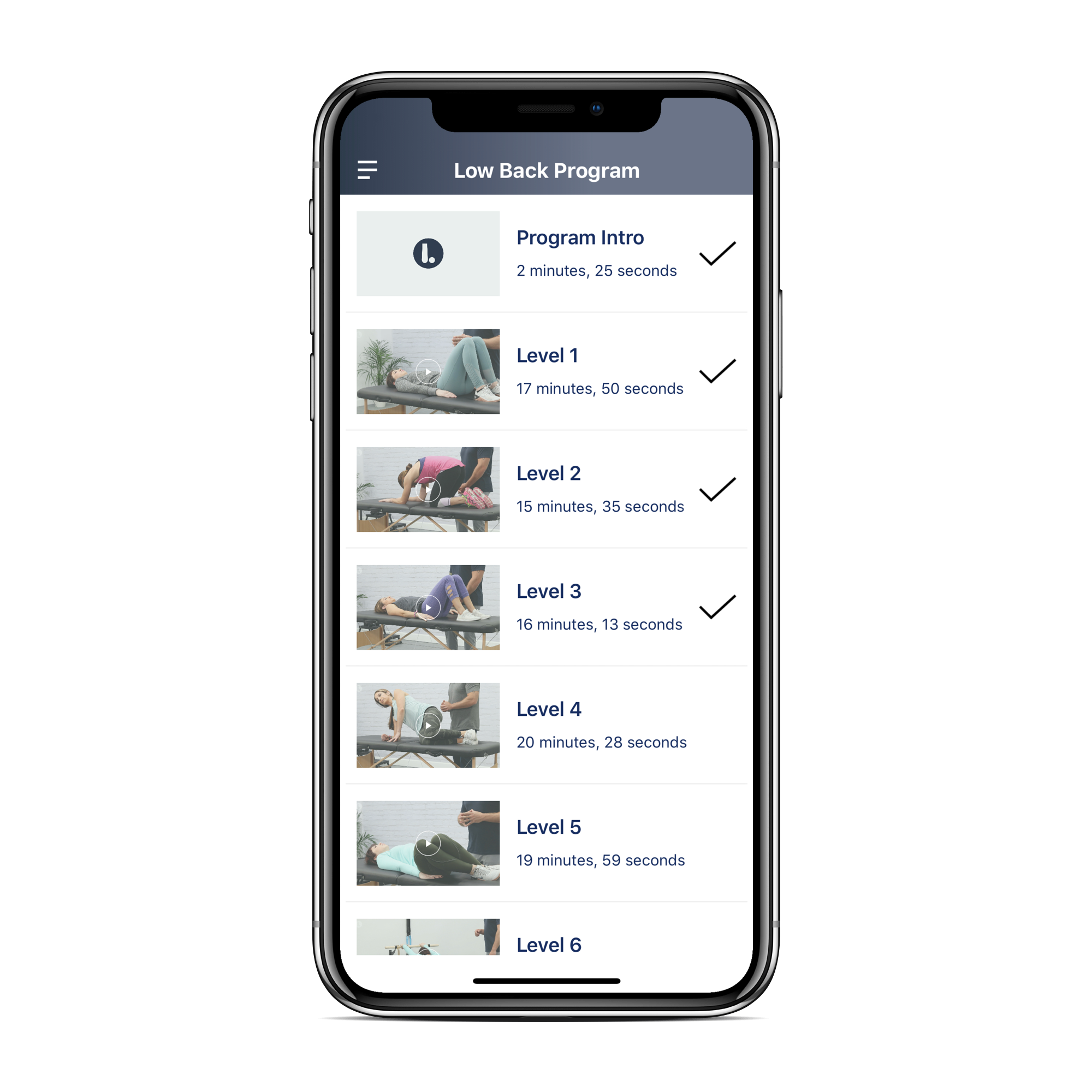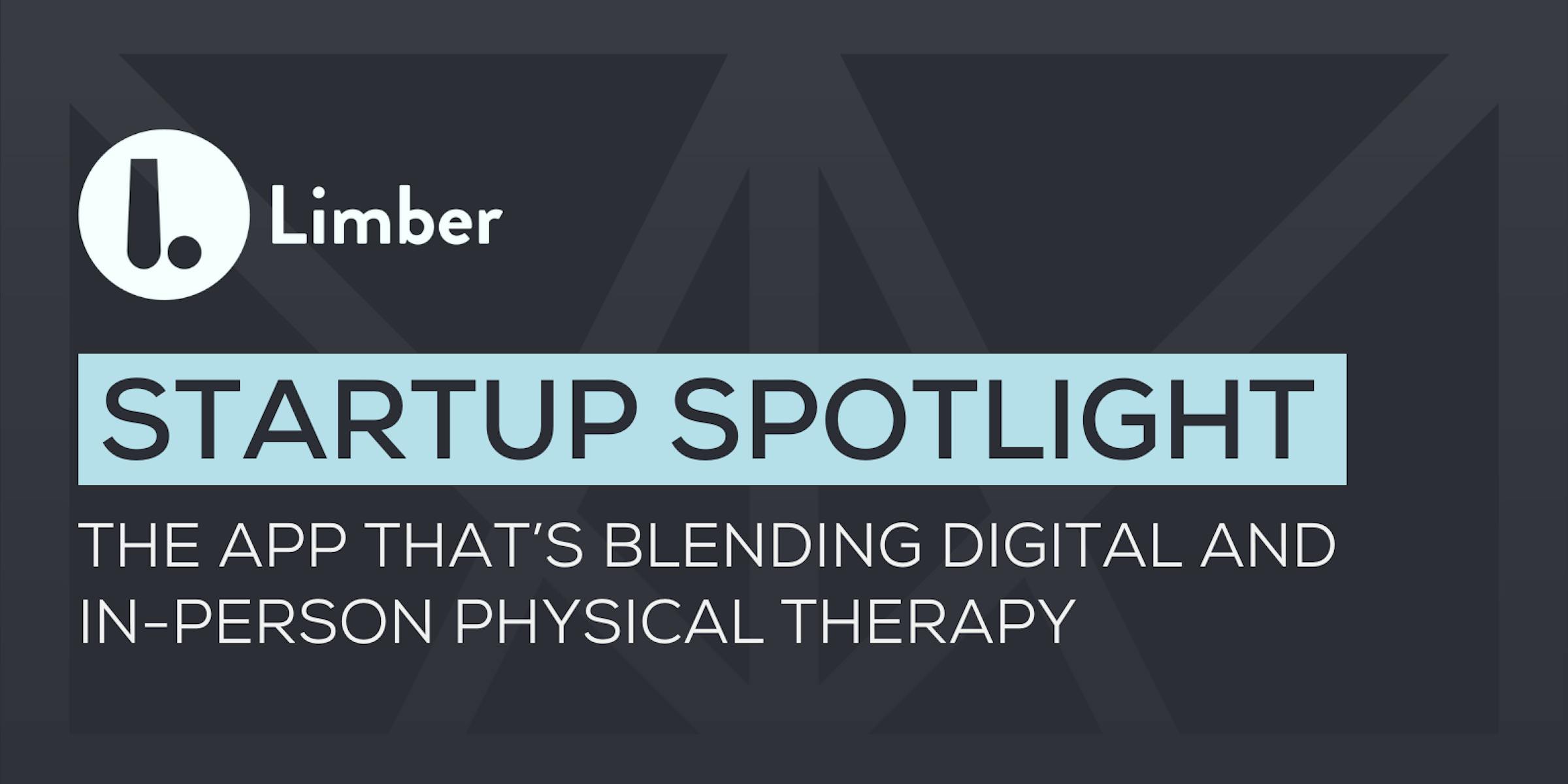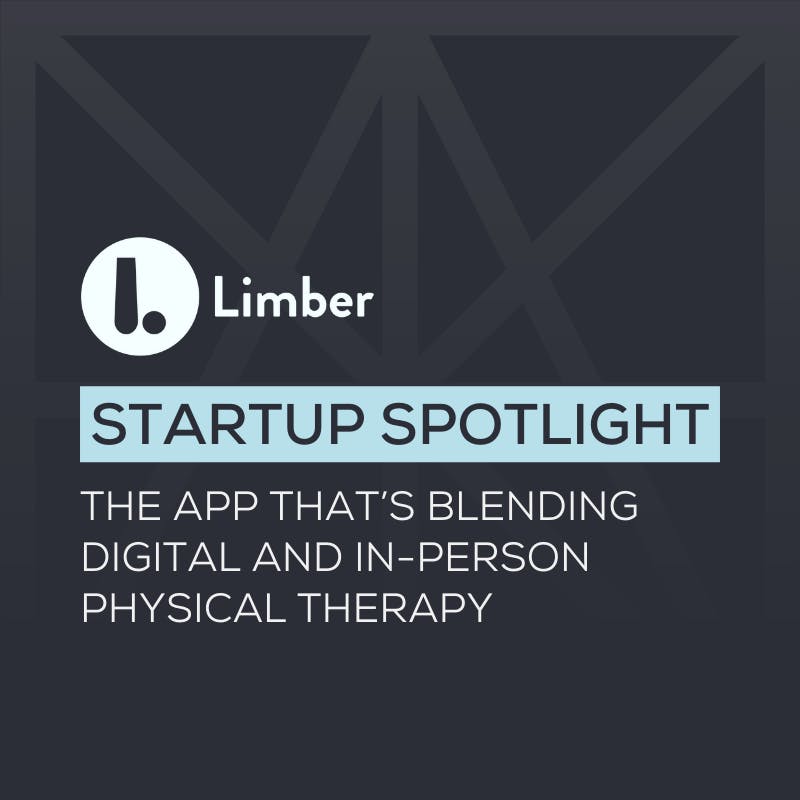MATTER Startup Spotlight: Limber
The app that’s blending digital and in-person physical therapy
Further exacerbated by the pandemic, musculoskeletal (MSK) conditions are affecting increasingly more Americans. According to the National Center for Health Statistics, one in two adults lives with MSK pain each year. At the same time, less than 12 percent of adults living with MSK injuries attend physical therapy (PT) due to high copays, long travel distances and time constraints.
Dr. Marc Gruner, co-founder and chief medical officer of Limber, shares how Limber’s app aims to increase early PT adherence, alleviate pain and lower medical utilization and costs through a robust MSK assessment, proprietary risk stratification, tailored at-home exercise therapy video programs and a provider remote monitoring platform.
A recent study conducted at the Mayo Clinic and published in the Archives of Rehabilitation Research and Clinical Translation found Limber’s digital exercise therapy solution more effective at improving pain and function for people with knee pain than more conventional, in-person PT prescription.
Read on to learn more about Limber’s story and follow them on LinkedIn @Limber, Twitter @limberhealth and Instagram @limberhealth.
Responses have been edited for length and clarity.
MATTER: What sparked your idea for Limber?
Marc: “As I was handing out prescriptions for PT in the doctor’s office, I noticed only a small percent of patients would follow through — many others didn’t attend PT because of busy schedules or expensive copays. This led to a large gap of people receiving a PT script and those actually getting PT. And we know from numerous studies that a lack of early and adherent PT can lead to downstream MSK costs (e.g. surgeries, medications) for patients, providers and employers.
“After my MBA, I was working at the Center for Medicare and Medicaid Innovation developing new payment models by looking at care more holistically. More specifically, I was working on orthopedic bundled care models when I realized there needed to be a better care management and home exercise platform for doctors and physical therapists. That’s when we created Limber.
“We wanted to develop a solution to make therapy easier and more accessible for today’s patients, who have back and joint pain, to do their exercise therapy in the comfort and convenience of their home and provide clinicians with digital tools to remotely monitor their patients to ensure they are getting better.”
MATTER: How does the Limber app work?
Marc: “The Limber app takes a patient through a robust musculoskeletal assessment and a proprietary risk stratification which were validated in two clinical studies at the Mayo Clinic. After learning about the patient, Limber helps assign an at-home exercise therapy video program.

Screenshot of an at-home exercise therapy program on the Limber app.
“We validated our digital home exercises against conventional, in-person PT in a randomized controlled study at Mayo Clinic and found Limber’s program more effective at reducing pain and improving function than a conventional PT prescription.”
MATTER: How did you develop a sustainable business model?
Marc: “The RCT at the Mayo Clinic demonstrated that we were providing a solution that could improve patient adherence to home-exercise therapy and patient outcomes, but one of the barriers in healthcare is developing a solid financial model. Most MSK solutions are focused on selling to employers with a digital-only approach, but it is our position that it is critical to loop in providers so they have access to real-time information on whether their patients are adhering to therapy and whether their patients’ pain and function are improving so care can be escalated quickly, when appropriate.
“As a provider, I considered, ‘How could we make Limber easy to use, and what might make it challenging for providers?’ Having this insight prior to developing Limber helped us not only make a patient-facing product but a provider-facing product. I knew if it was really challenging for a provider to use, there would be no financial ROI.
“As a provider, I considered, ‘How could we make Limber easy to use, and what might make it challenging for providers?’ Having this insight prior to developing Limber helped us not only make a patient-facing product but a provider-facing product.”
“We are thrilled because we now have approved Current Procedural Terminology (CPT) codes that reimburse providers and the technology they use, and we have also now developed a risk-based, value-based care model.”
MATTER: How did you get an approved CPT code? How has the code affected your business?
Marc: “While remote patient monitoring has been used in other specialties to improve quality of care, it has not been available for orthopedic conditions because current CPT monitoring codes do not allow the use of ‘therapeutic’ data – such as pain, functional status and adherence to therapy.
“The Limber team has been working with the American Medical Association (AMA) and others since May 2020 to drive the creation of a CPT code set for remote therapeutic monitoring (RTM) for orthopedic conditions. Recognizing the gap in coding, AMA’s CPT Editorial Panel and the Relative Value Scale Update Committee approved the new CPT codes. And in a very exciting development, Medicare is now proposing to cover and reimburse these new codes starting in January 2022.
“The new codes are broadly supported by the experts in orthopedic care — orthopedic doctors, physiatrists, physical therapists and their associations representing consumers, including the American Academy of Orthopaedic Surgery, American Physical Therapy Association and the Arthritis Foundation. The new CPT code, which will go live January 1, 2022, enhances our business model as it will allow clinicians to get reimbursed for using Limber.”
MATTER: Do you see Limber replacing conventional, in-person physical therapy?
Marc: “Absolutely not. Our company mission is to blend in-person therapists with digital therapy, and that’s what we’ve been focusing on. This is actually one reason we got the CPT code. We believe the most accessible approach to the future of medicine is a hybrid approach, meaning that some people might have a fully virtual experience, some fully in-person and some a combination. It takes muscles eight weeks to adapt, so some people have to do therapy in the clinic and at home to achieve successful outcomes.”
“We believe the most accessible approach to the future of medicine is a hybrid approach, meaning that some people might have a fully virtual experience, some fully in-person and some a combination.”
MATTER: What advice do you have for other healthcare entrepreneurs who are just starting out?
Marc: “It can sometimes be lonely to create a startup, so I try to mentor other entrepreneurs as much as possible. The number one piece of advice I give them is to find other startups they can receive guidance from. The MATTER community is crucial for Limber, as it enables us to talk to other companies about how to do something, whether it be marketing, sales, setting up an app or designing a product from scratch. We also regularly meet with the mentors — one actually introduced us to a customer.
“The most important thing I tell people is they need to find a customer before building anything. They could have the best idea in the world and be very passionate about it, but before building the product, I recommend obtaining a letter of intent. That way, you know when someone looks at your product they see a reason to buy it.
“The most important thing I tell people is they need to find a customer before building anything.”
“And lastly, a lot of people — especially patients — will see there are many opportunities to improve healthcare, but if you don’t know how to make your solution profitable, it can be difficult for entrepreneurs to achieve success. Make sure that once you have a customer, you define a profitable, sustainable business model.”
Interested in meeting a community of fellow entrepreneurs, industry leaders and investors? Learn more about opportunities for MATTER startup members.
About Limber
Developed by doctors in sports medicine & physical therapy, Limber is a digital health solution for payers & providers, designed to reduce costs & improve the care of individuals with musculoskeletal conditions, such as low back & knee pain. The Limber app features a robust musculoskeletal assessment, proprietary risk stratification, tailored at-home exercise therapy video programs (think Peloton meets Physical Therapy), & clinically validated outcomes tracking. In a randomized, controlled clinical trial that was recently completed at the Mayo Clinic, Limber was shown to be three times more effective than traditional PT at reducing pain and improving function.
About MATTER
MATTER, the premier healthcare incubator and innovation hub, includes more than 300 cutting-edge startups from around the world, working together with dozens of hospitals and health systems, universities and industry-leading companies to build the future of healthcare. Together, the MATTER community is accelerating innovation, advancing care and improving lives. For more information, visit matter.health and follow @MATTERhealth.




